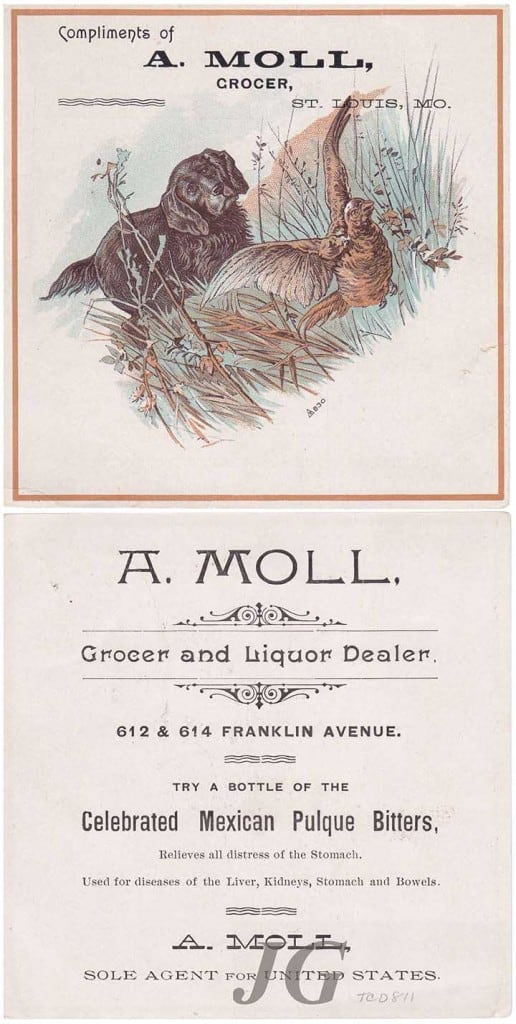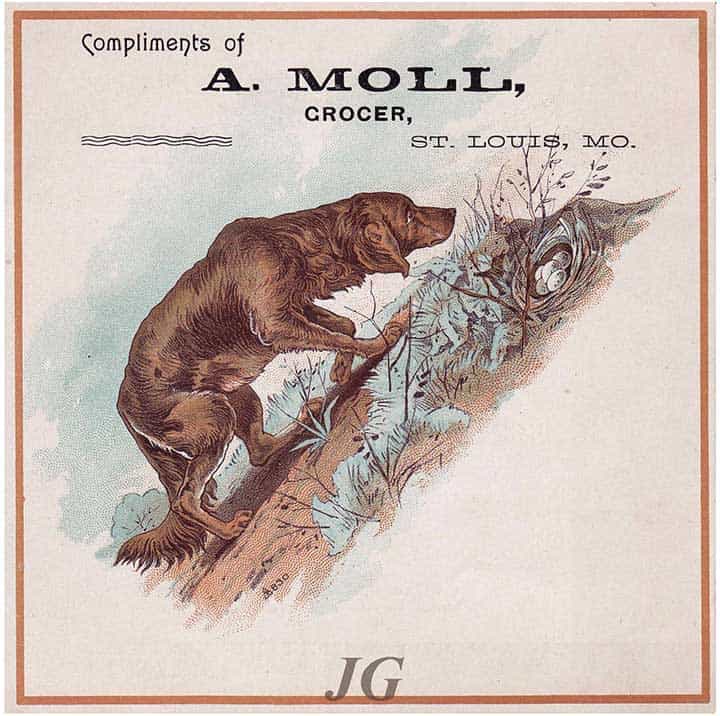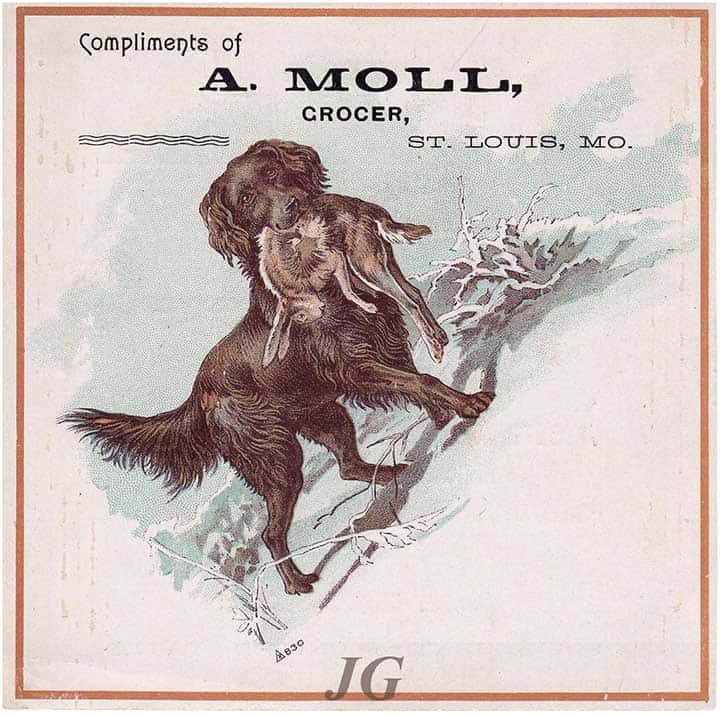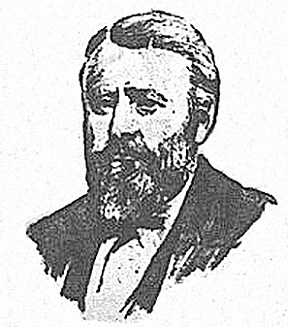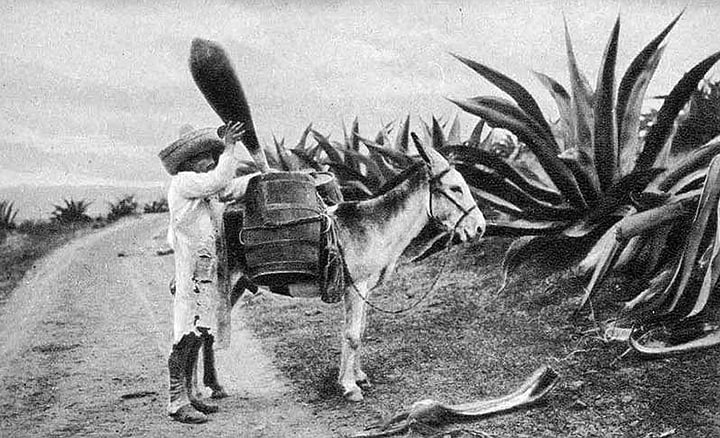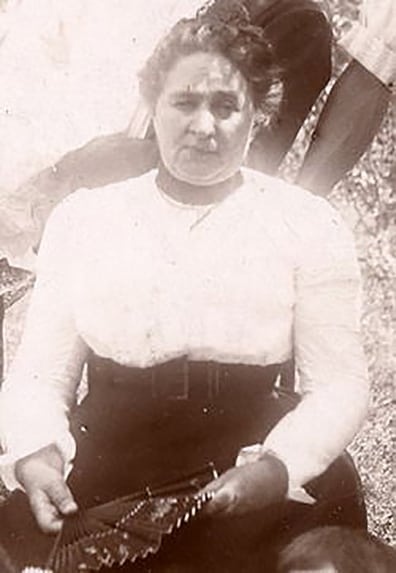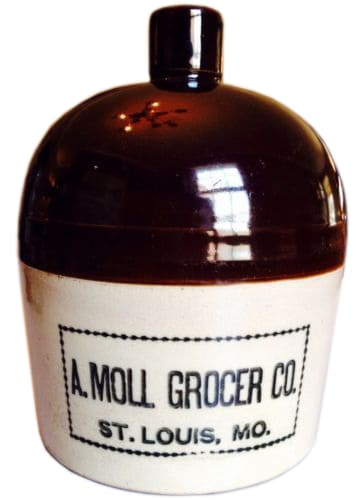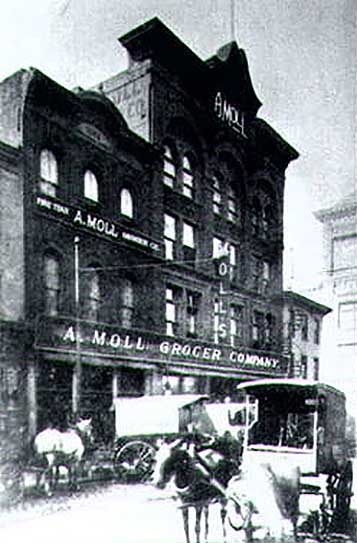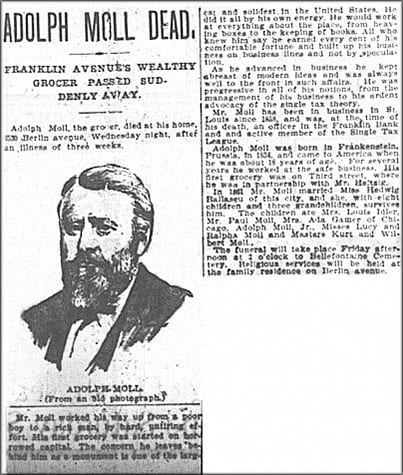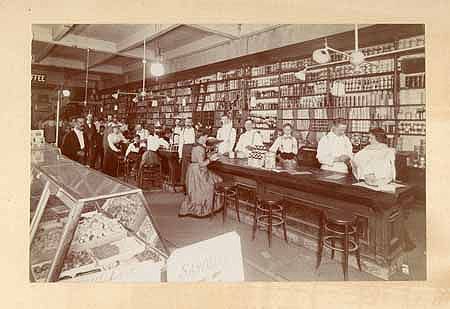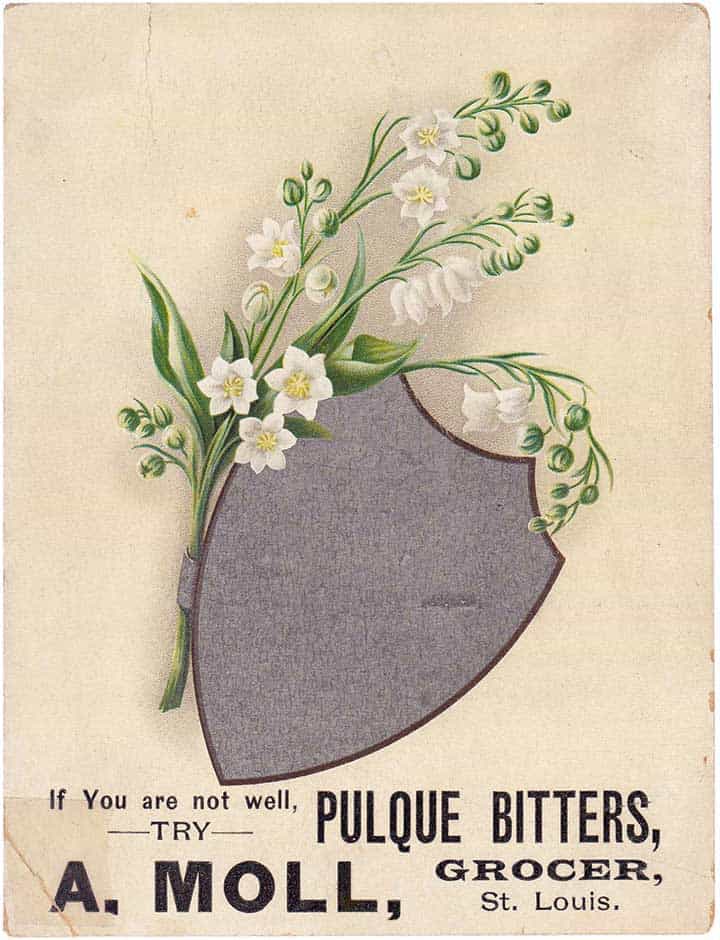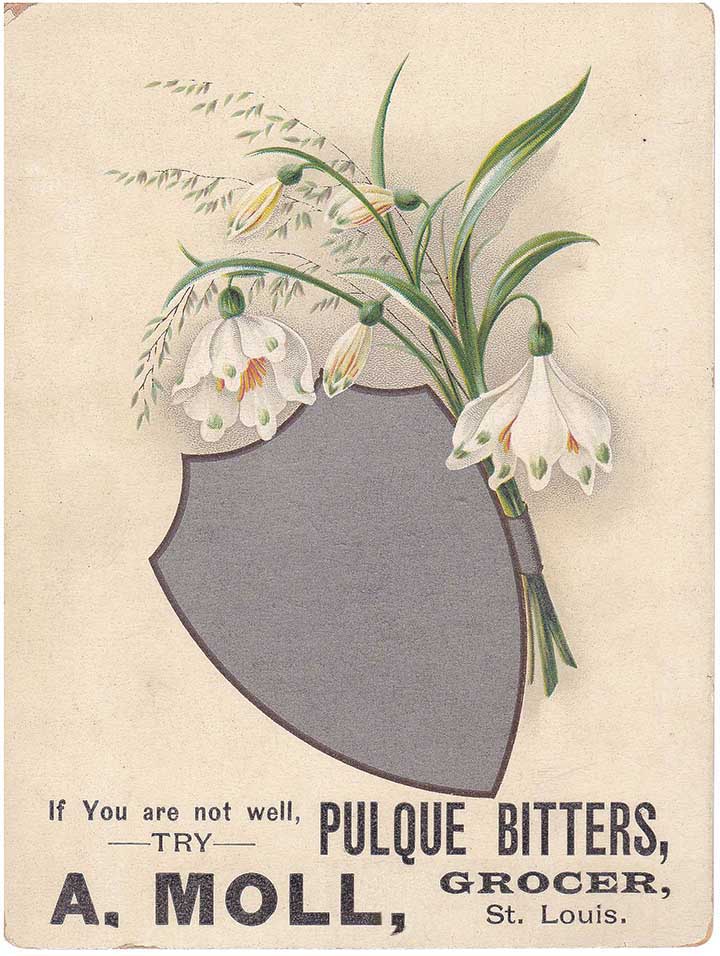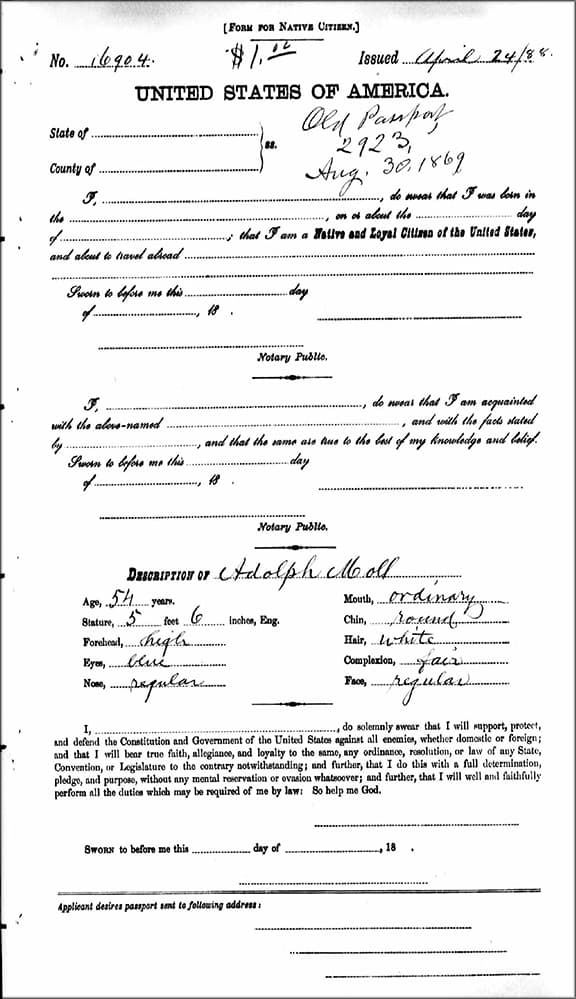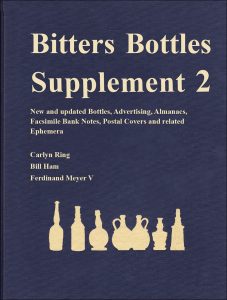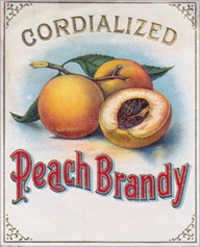Adolph Christian Ferdinand Moll and his Mexican Pulque Bitters
18 March 2015
![]() I picked up a small medicine style aqua bitters recently that was embossed “Mexican Bitters”. That’s all, just Mexican Bitters. Apparently one was dug in Buffalo, New York many years ago. Of course this is not the rather well-known Mexican Bitters put out by Henry C. Weaver in Lancaster, Ohio.
I picked up a small medicine style aqua bitters recently that was embossed “Mexican Bitters”. That’s all, just Mexican Bitters. Apparently one was dug in Buffalo, New York many years ago. Of course this is not the rather well-known Mexican Bitters put out by Henry C. Weaver in Lancaster, Ohio.
As I was studying the bottle, I saw a listing in Bitters Bottles for a Mexican Pulque Bitters and it noted that the only reference was a trade card. That prompted a communication to bitters ephemera king Joe Gourd, who gladly provided the advertising trade card images for this post.
The Carlyn Ring and W.C. Ham listing in Bitters Bottles for Mexican Pulque Bitters is as follows:
M 79 MEXICAN PULQUE BITTERS
WAT Supp Lost
Trade Card for A. Moll, Sole agent for the U.S., Grocer and Liquor Dealer
612 & 614 Franklin Ave., St. Louis
Try a Bottle of the Celebrated Mexican Pulque Bitters, relieves all distress of the stomach. Used for a diseases of the liver, kidneys, stomach and bowels.
Dog and pheasant motif.
A. MOLL
Adolph Christian Ferdinand Moll liked to go by the name “A. Moll”. I think I can understand why. A. Moll was considered the “Grocery King” of Franklin Avenue in St. Louis and he was also a liquor dealer and the sole agent in the United States for Mexican Pulque Bitters.
Pulque is an alcoholic beverage made from the fermented sap of the maguey (agave) plant. It is traditional to central Mexico, where it has been produced for millennia. It has the color of milk, somewhat viscous consistency and a sour yeast-like taste. The drink’s history extends far back into the Mesoamerican period, when it was considered sacred, and its use was limited to certain classes of people. After the Spanish Conquest of Mexico, the drink became secular and its consumption rose. The consumption of pulque reached its peak in the late 19th century. In the 20th century, the drink fell into decline, mostly because of competition from beer, which became more prevalent with the arrival of European immigrants. There are some efforts to revive the drink’s popularity through tourism. [Wikipedia]
Adolph Moll was the son of Johann Friedrich Ludwig Moll and Maria Carolina Friderica Burmeister. He was born on 9 April 1834 in Perleberg, Kreis Westpregnitz, Brandenburg, Prussia (aka Frankenstein, Prussia). He emigrated with his family from Germany to New York City in May 1852. He is listed in Brooklyn in the 1855 New York State Census, but moved to St. Louis about 1856 and was naturalized in the St. Louis Law Commissioner’s Court in 1858 at the age of 24. In that same year, he formed the Heidsick & Moll grocery partnership, the store being located on N. Third between Market & Chestnut. Prior to this he was in the safe business for a few years. Mr. Moll was described as a hard working man who started with nothing and built one of the most solid and advanced grocery businesses in United States, possibly a model for today’s grocery stores.
Adolph Moll married Emma Friederike Hedwig Ballaseus, daughter of Johann Wilhelm Ballaseus and Julianna Justina (aka Ida Augusta) Wagner in February 1861. She had joined her mother and older sister in St. Louis in May 1860. They were married by Reverend Dr. Hugo Krebs in the Evangelist Church of the Holy Ghost. They had eight children. The oldest of the boys was Paul Moll who would later join his father in the grocery business. The same applies to Adolph Moll who was 10 years younger than Paul. Matriarch Hedwig Ballaseus was also a strong presence in the business concern.
Interestingly enough, the next month, two other German couples were married in the same church, in a double wedding, this being Ulrich Busch and Anna Anheuser and the second was Adolphus Busch, a wholesaler who had immigrated to St. Louis from Germany in 1857 who married Eberhard Anheuser’s daughter.
The A. Moll Grocer Company began in 1863, and it dominated Adolph’s life for 35 years until his death on 22 June 1898 in St. Louis. He would work at everything in the grocery store from heaving boxes, marketing and keeping the books. People who know him said he earned every cent of his money as he built up a comfortable fortune. He was very keen in business and kept up with all modern advances in the industry. He once lured customers into his grocery store in 1885 with a 2,300-pound wheel of cheese. He was progressive in all is notions from the management of his business to his ardent advocacy of the single tax theory.
After his death, Adolph Arthur Moll was president of A. Moll Grocer Company. He was born in St. Louis on 25 September 1873 and was educated in public schools in St. Louis. He began an active career with the Wagner Electric Co., continuing for two years and then entered the grocery business as a clerk with the A. Moll Grocer Co., By June, 1895 he was acting general manager, and after death of brother Paul in 1903, became vice president and general manager and was named president of the concern in 1907.
Paul Moll, Sr, was born in St Louis on April 27, 1865, and in April 1894 he married Mollie Augusta Gamer. They had 2 boys and 2 girls, the oldest boy being Paul Moll Jr. who was born in January 1896. He married Marjorie Mosier and on June 2, 1922, their son Paul Moll III was born.
Adolph Moll is noteworthy for having supported so many of his relatives, many through jobs at the grocery. He appears to have brought several to St. Louis, including his widowed father (after June 1865), brother Frederick Moll (1864), brother-in-law/widower William Paust (1868), brother-in-law Adolph Ballaseus (1870), brother-in-law Arthur Ballaseus (1871), sister-in-law/widow Antonia Bormann (1875), and brother Robert Moll (1878). The latter deserves special mention, as he was a highly decorated Civil War veteran with various New York infantry units, with major engagements at Chancellorsville and Gettysburg. Both Adolph and Robert Moll are buried with their respective families at Bellefontaine Cemetery. Adolph’s mother-in-law, however, was buried in Holy Ghost Cemetery, which was cleared in 1916 for Theodore Roosevelt High School (with any remains re-interred elsewhere). She appears in City death records as “A.W. Bullouseus.”
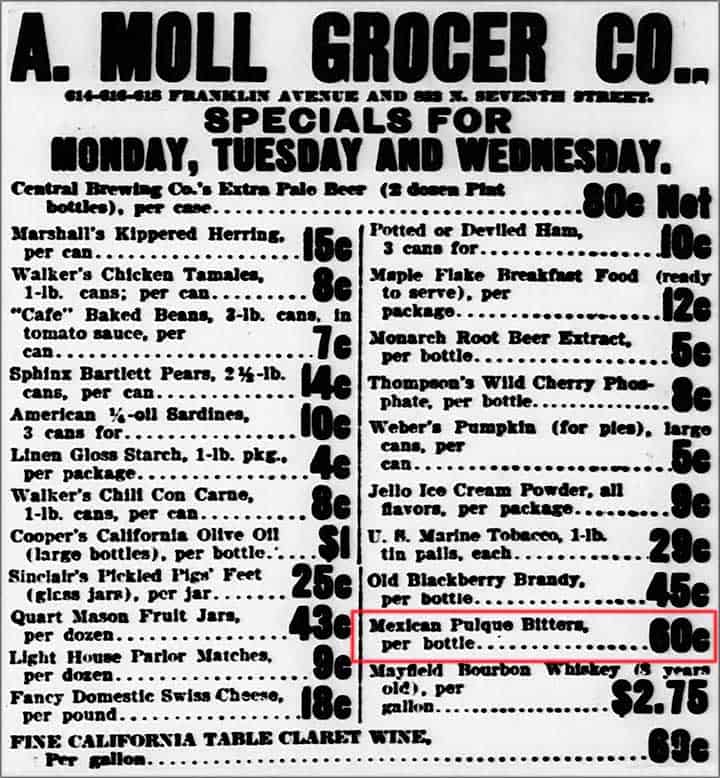
Mexican Pulque Bitters on sale for 60 cents a bottle at A. Moll Grocer Company – The St. Louis Republic, Sunday, July 23, 1905
Select Listings:
1834: Adolph Christian Ferdinand Moll, son of Johann Friedrich Ludwig Moll and Maria Carolina Friderica Burmeister, was born 9 April 1834 in Perleberg, Kreis Westpregnitz, Brandenburg, Prussia
1852: Adolph Moll emigrated in 1852 to America settling in New York
1861: Marriage to Hedwig Ballaseus on 02 February 1861 in St. Louis.
1871: Adolph Moll, Grocer, 618 Franklin Avenue – St. Louis, Missouri City Directory
1875-1885: Adolph Moll, Grocer, 612 and 614 Franklin Avenue – St. Louis, Missouri City Directory
1880: Adolph Moll, Fine Liquors, 612 and 614 Franklin Avenue – St. Louis, Missouri City Directory
1880: Adolph Moll, age 45, Retail Grocer, wife Hedwig, St. Louis, Missouri – United States Federal Census
1885: Adolph Moll, who lured customers into his grocery in 1885 with a 2,300-pound wheel of cheese.
1889: Adolph Moll, Grocer, 612 and 614 Franklin Avenue and 822 N. 7th. – St. Louis, Missouri City Directory
1898: Adolph Moll died 22 June 1898 in St. Louis, Missouri.
1905: Mexican Pulque Bitters on sale for 60 cents a bottle at A. Moll Grocer Company (see advertisement above) – The St. Louis Republic

